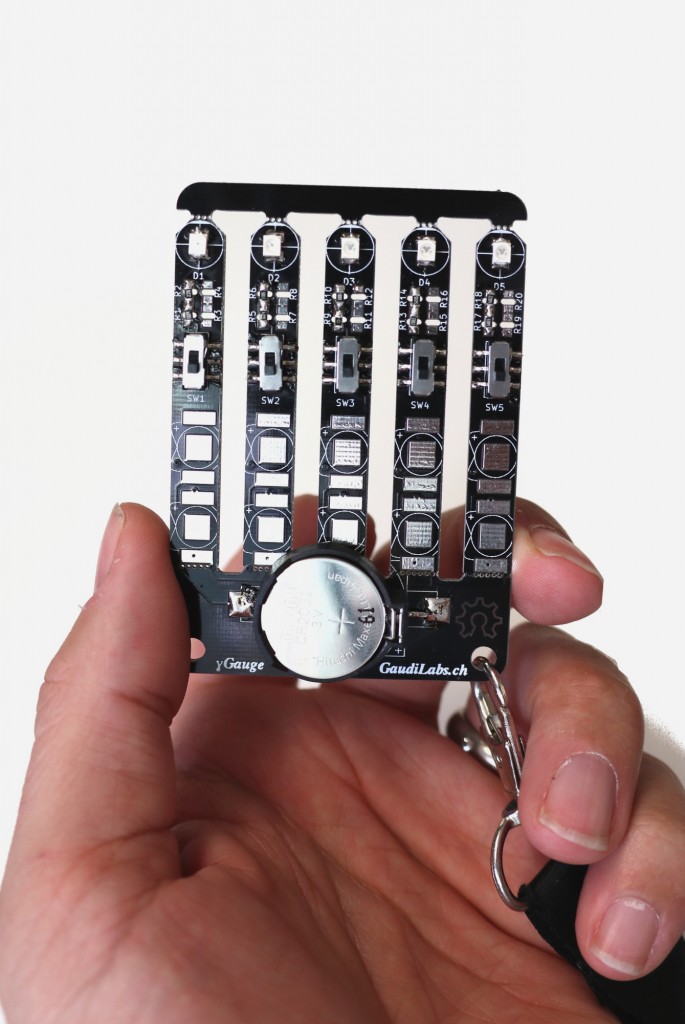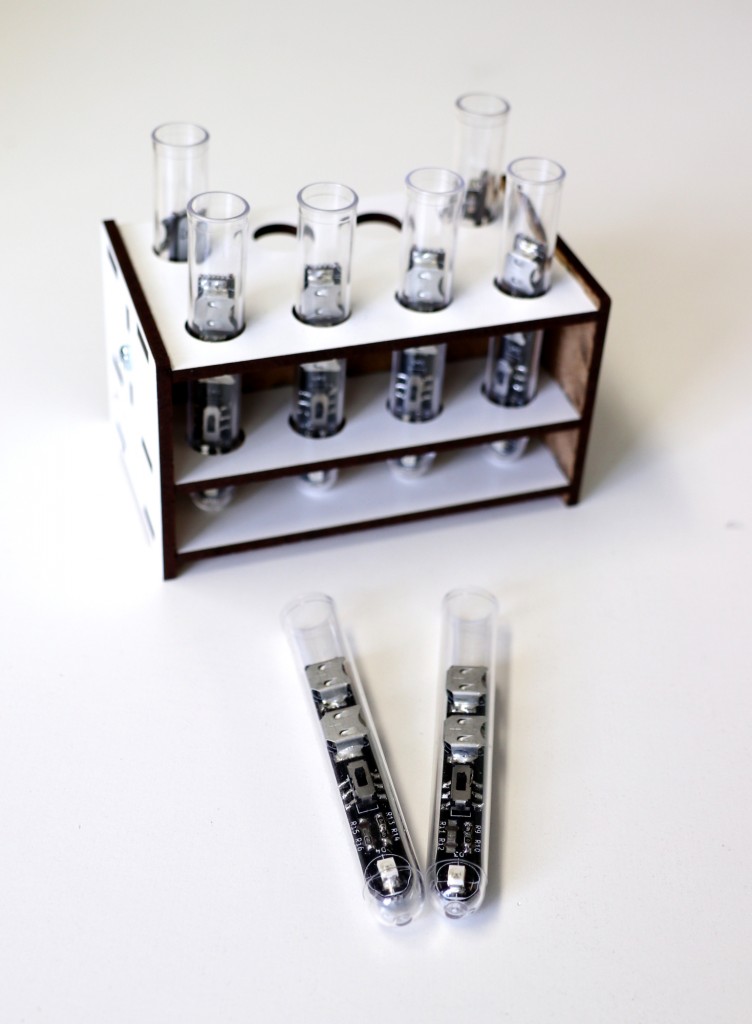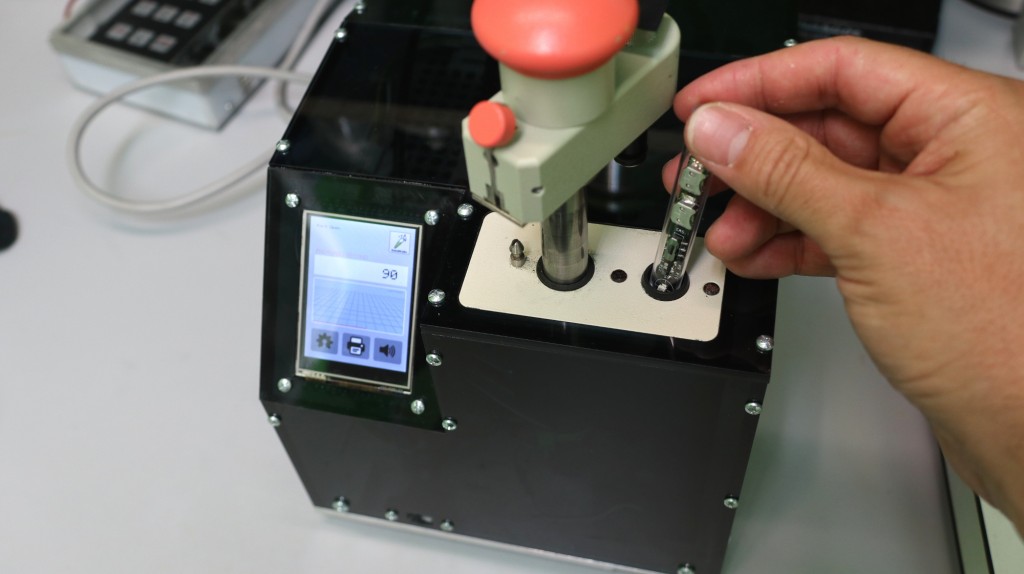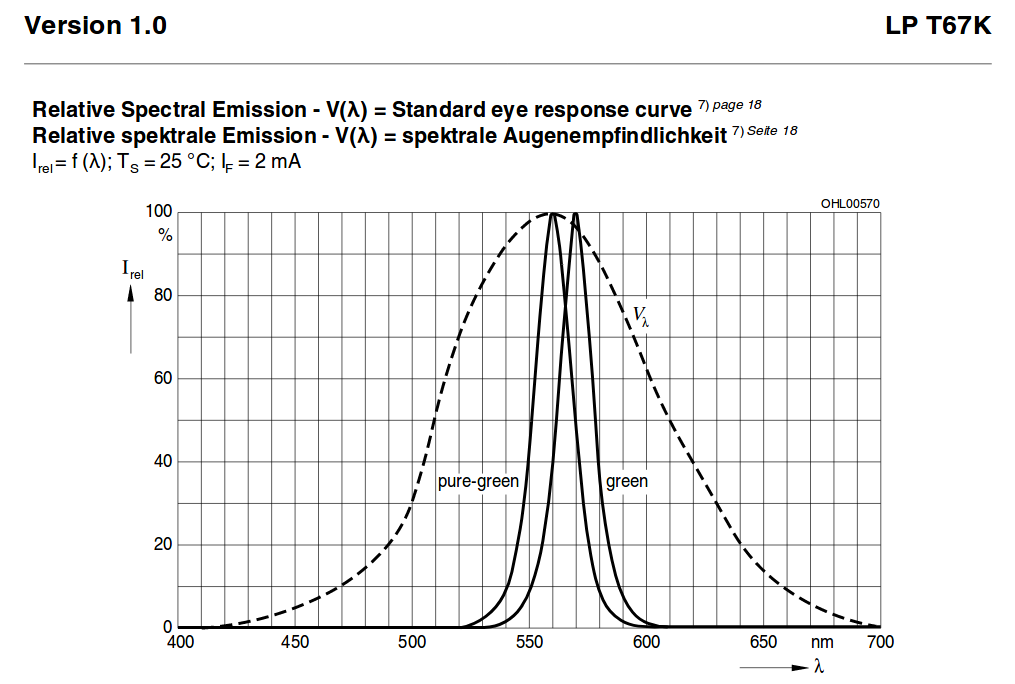The yGauge (Gamma Gauge) is a simple electroluminescent device to reference lowest luminosity.
Our human eyes are extremely sensitive to light. Studies have found that we can see as low as a single photon of light. However in our world of electronic media with ever brighter mobile phones and power LEDs we live in kind of sensory overload. To rediscover our eyes amazing capabilities I built the YGauge, a device that emits precisely defined, very low levels of light. Five LEDs with high resistors (in the range of mega-ohm) emit amounts of lights that range from just visible to barely visible. The LEDs are referenced against the photo multiplier tube of a Luminometer that can detect down to a few photons per second. The faint light emitted by the yGauge LEDs can only be seen when well accustom to the dark. Then the device can be used to reference your eye in the range of the gauge and can even be used to determine the luminosity of a glowing sample such as a bio- or chemoluminescent assays . And this for the fraction of the price of a luminometer.
The light emitting diodes (LEDs) used for the yGauge are of the type LP T67K from OSRAM.
These LED emit light at a wavelength of 562nm, the peak sensitivity of the human eye.
To reduce the amount of light emitted by the LEDs an array of resistors (in parallel and serial) is used. The resistors needed to produce a certain amount of light was so determined in the luminometer. The circuit board is designed in a way to either break off single “fingers” so to put them in a test-tube and measure them in the luminometer. Or then to use it as a whole with only one battery powering all the five LEDs of the gauge.


yGauge device with five fingers or separated into measurement tubes.

Reference measurement in a luminometer (hacked Berthold Lumat LB 9501 Single Tube Luminometer)
http://www.osram-os.com/Graphics/XPic7/00088876_0.pdf


Leave a Reply
You must be logged in to post a comment.